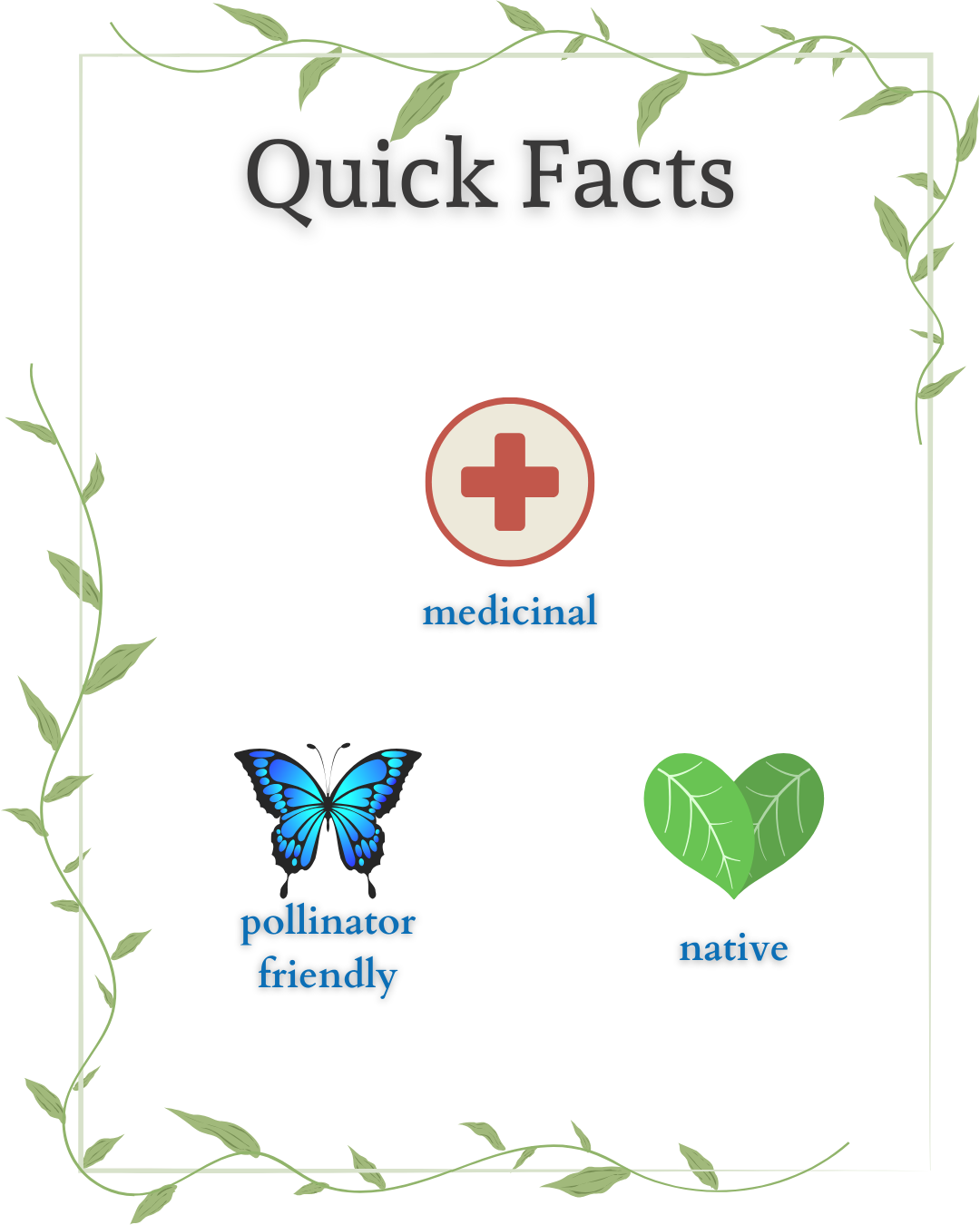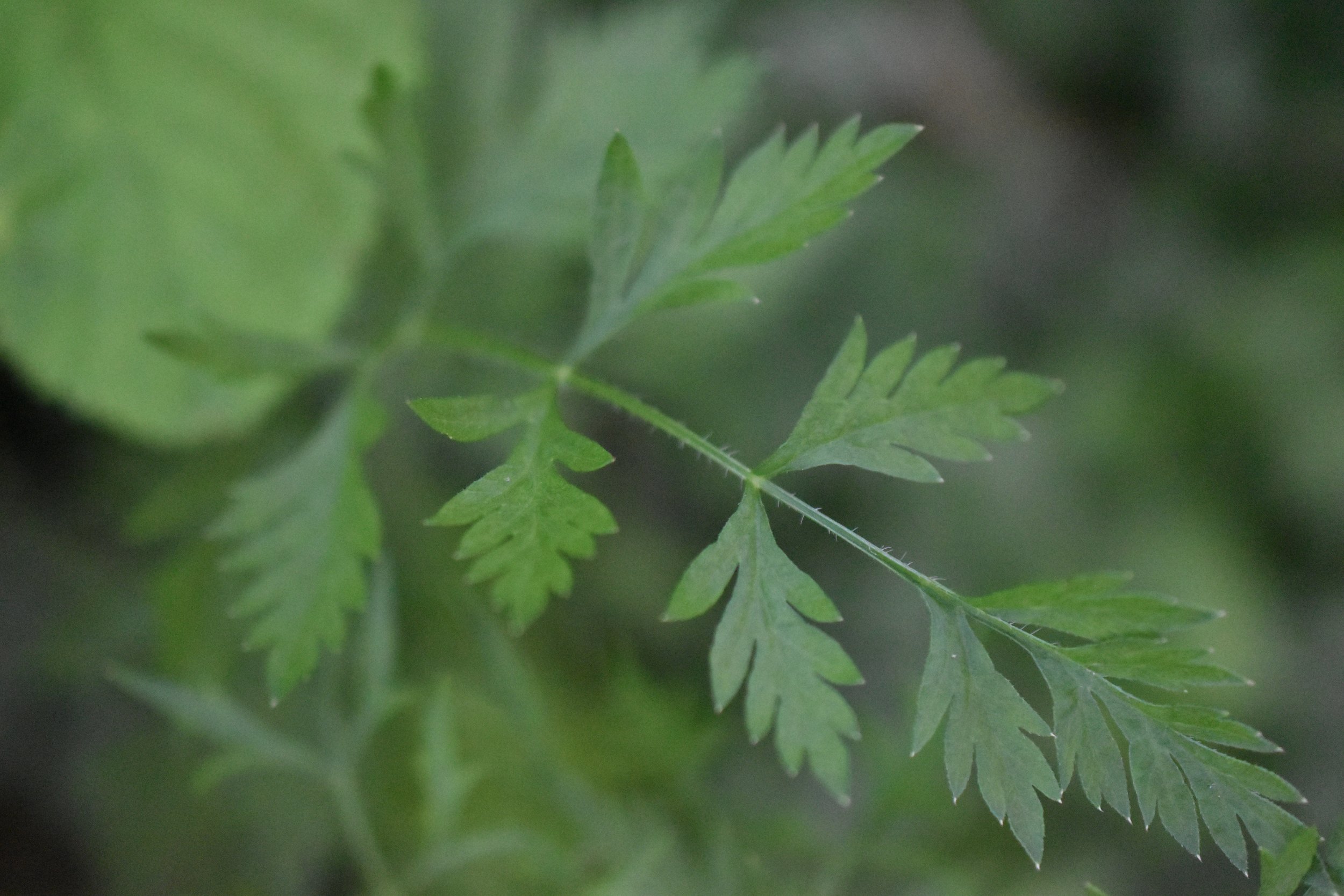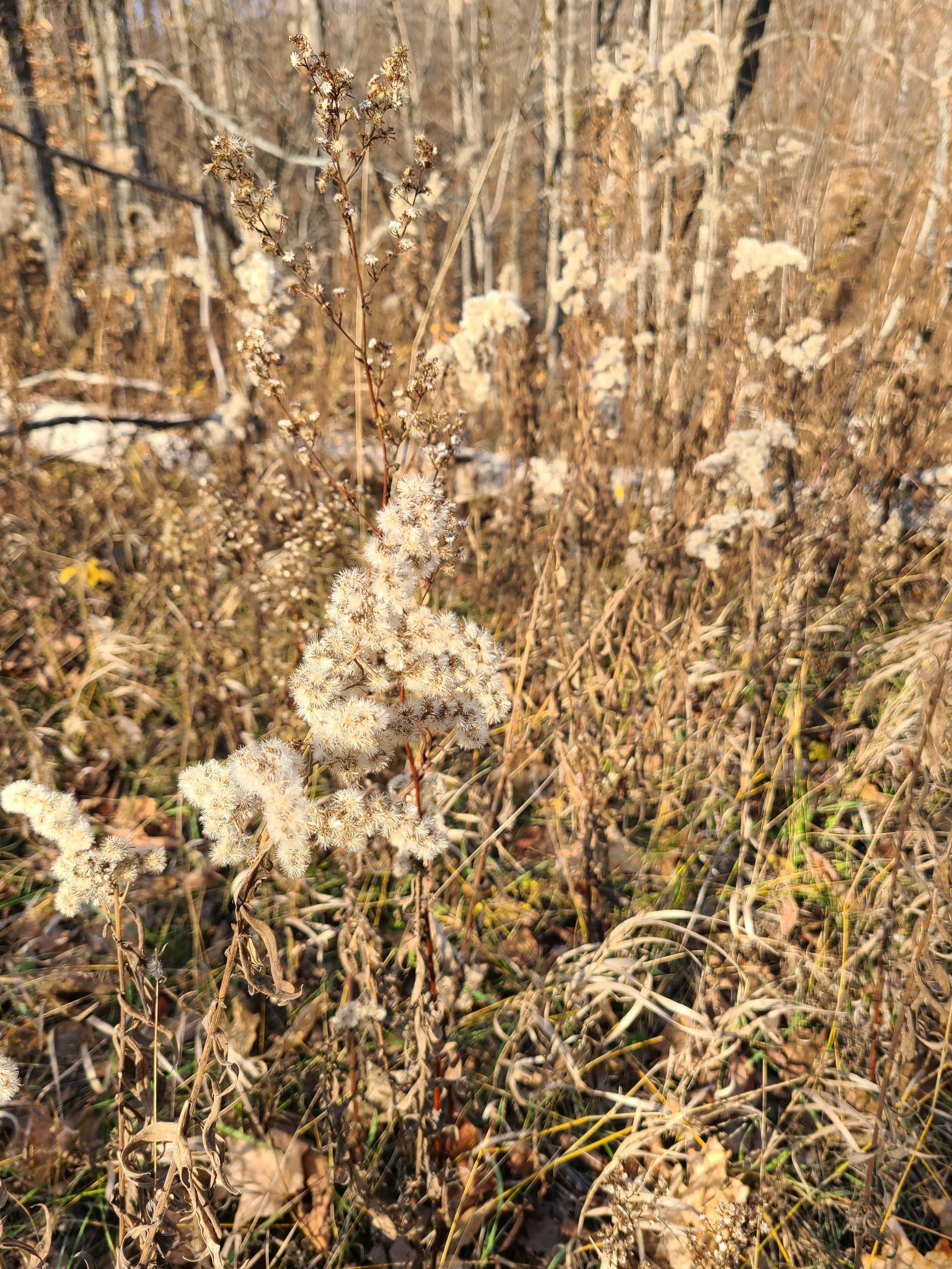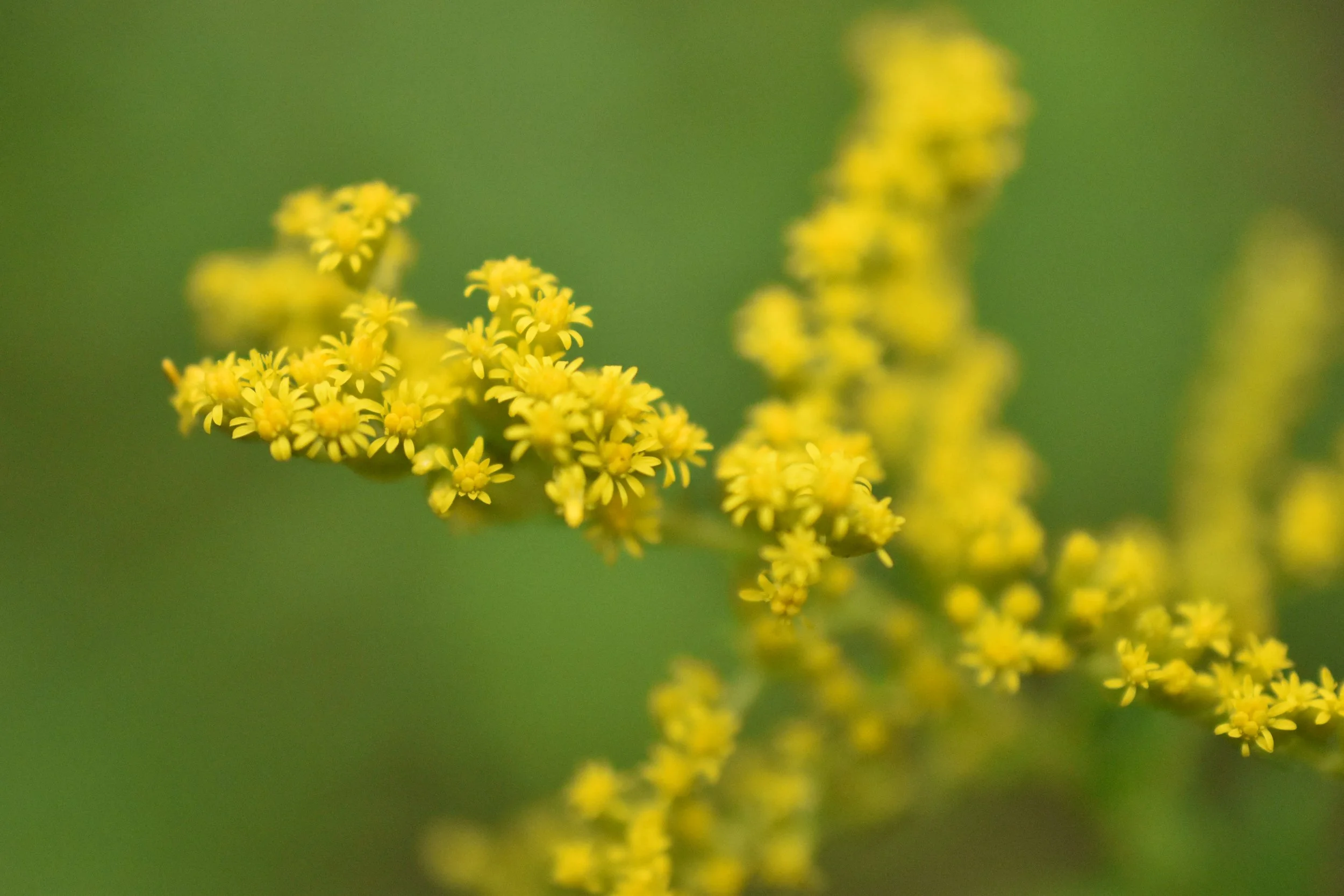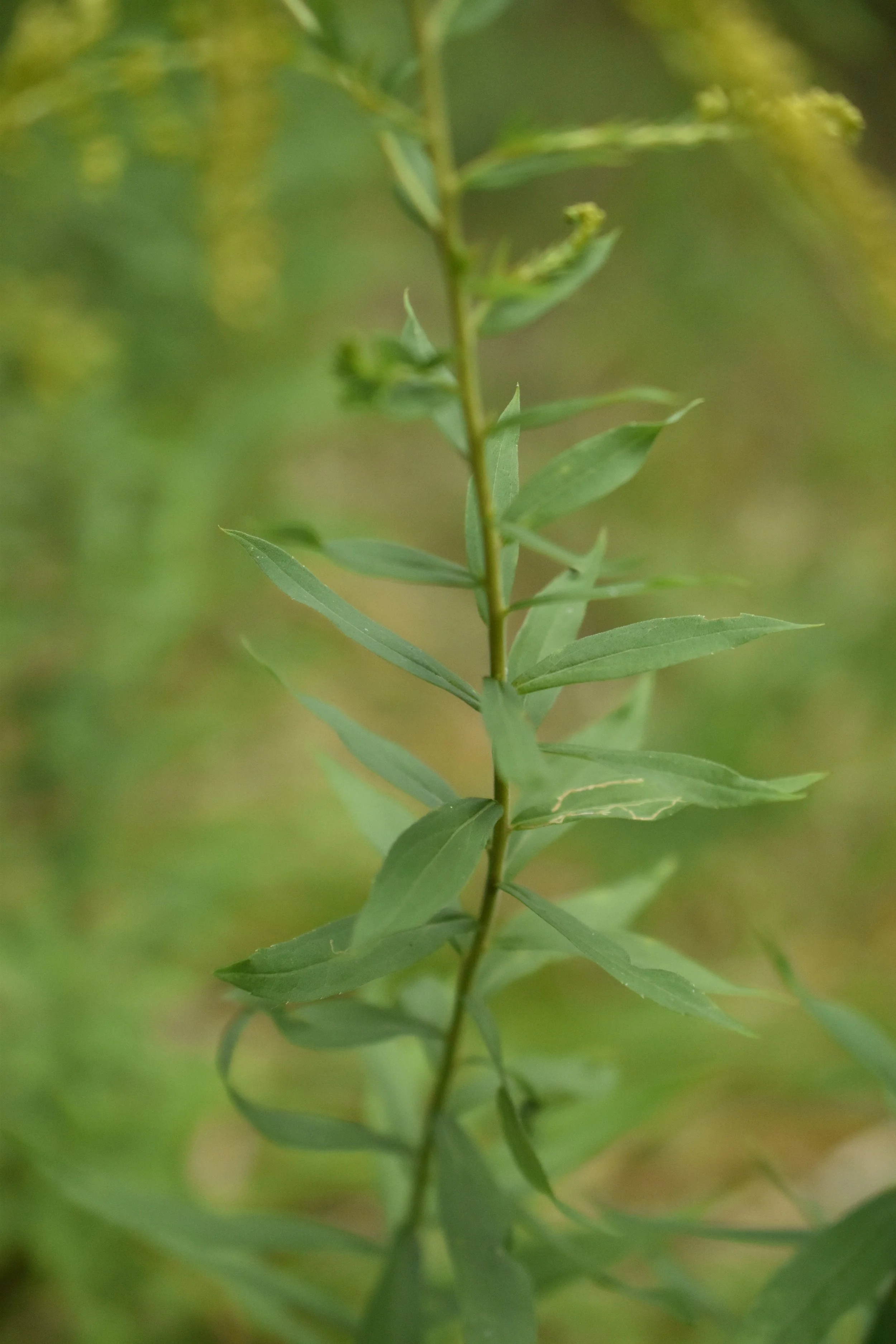Goldenrod
Solidago spp.
Plant Family: Asteraceae
Other common names: Yellowweed, Woundwort
*native/non-native is specific to the Great Lakes Region of the United States
An Ode to Solidago
by Alaina Vacha
brilliant yellow spires sway in the breeze with ease
abundantly present, they offer remedies for your maladies
irresistible, the sweet nectar feeds the buzzing bees
and joyous views of golden hues
Medicinal Virtues & Edible Parts
Energetics — drying and warming
Flavors — bitter, subtly sweet
Organ/System Affinities — urinary, kidneys
Energetics — drying and warming
Flavors — bitter
Organ/System Affinities — urinary, kidneys
Actions — diuretic, astringent, inflamation-modulating, aromatic, carminitive
Before the bright yellow flowers bloom in Autumn, Goldenrod shoots up stalks that can reach about 5 feet tall with alternating, dark green leaves adorning the entire stalk. Solidago grows easily where there is plenty of sunlight, most commonly seen along roadways and in open fields. There are many different species, and each one look just slightly different from the next — some spires are smaller and more condensed than others, whose spires can reach about a foot in length. Each species is used in food, medicine, and crafting in the same ways, though. The leaf margins are serrulated with a lanceolate shape.
Another varitation.
The middle vein runs the entirety of the leaf, with smaller veins branching off in a perpendicular fashion.
Still easily identified in Winter, the flowers turn into puffy seed balls.
FLOWERS
Actions — diuretic, astringent, inflamation-modulating, aromatic, carminitive
Ally for — upper respiratory conditions; kidney stones; alleries and hay fever; cocktail bitters or other beverage flavoring; pets; fabric dye
LEAVES
Ally for — upper respiratory conditions; kidney stones; alleries and hay fever; cocktail bitters or other beverage flavoring; pets
Key Identifying Factors
Some species have tiny flowers in dense clusters close to the stalk.
Some species have tiny flowers in clusters that spread out further from the stalk.
Alternating lanceolate leaves with serrulated margins.
Although there are no known toxic lookalikes, proper identification is still necessary to ensure that the intended medicine is being administered/food is being consumed.
Compare dandelion to Ragweed (Ambrosia artemisiifolia and A. tridia), St. John’s Wort (Hypericum perforatum), Wingstem (Verbesina alternifolia), and Garden Tansy (Tanacetum vulgare) — to name only a few. Pay attention to the differences in flower heads, leaf structure, and seed heads.
Toxic Lookalikes
When and How to Harvest
Harvest the flowers anytime during the growing season before they go to seed. Some preparations (e.g. beverages that desire a sweeter flavor) require the flower buds before they open. Harvest the leaves anytime during their growing season. The older the leaves are, the tougher and more bitter they are. You can pick both flowers and leaves by hand or use garden scissors.
The leaves and flowers are generally regarded as safe (GRAS), but folks who are allergic to plants in the Asteraceae family should use with caution.
Precautions
Because the limited information above came from personal experience of one person, it is highly recommended that you continue learning from other trusted sources. Here are a few places to start!
Other Resources
The Earthwise Herbal: A Complete Guide to Old World Medicinal Plants by Matthew Wood
Midwest Foraging: 115 wild and flavorful edibles from burdock to wild peach by Lisa M. Rose
Midwest Medicinal Plants: Identify, Harvest, and Use 109 Wild Herbs for Health and Wellness by Lisa M. Rose
American Indian Healing Arts: Herbs, Rituals, and Remedies for Every Season of Life by E. Barrie Kavasch and Karen Baar
Magic and Medicine of Plants by Reader’s Digest
The Rodale Herb Book: How to Use, Grow, and Buy Nature’s Miracle Plants, an Organic Gardening and Farming Book
Encyclopedia of Herbal Medicine: 550 Herbs and Remedies for Common Ailments by Andrew Chevallier, FNIMH
500 Treatments for 100 Ailments: Integrated complementary and conventional medicine for the most common illnesses by Dr. Christine Gustafson, MD; Dr. Zhuoling Ren, TCMD; Beth MacEoin, MNCHM, RSHom; Dr. Geovanni Espinosa, ND, LAc, CNS, RH (AHG); Stephanie Caley, BSc (Hons) MNIMH
Herbs for Pets: The natural way to enhance your pet’s life by Gregory L. Tilford and Mary L. Wulff
The Modern Herbal Dispensatory: A Medicine-making Guide by Thomas Easley and Steven Horne
American Herbal Products Association’s Botanical Safety Handbook
Books
Websites & Videos
These statements and claims have not been evaluated by the Food and Drug Administration.
This information is not intended to diagnose, treat, cure, or prevent any disease. For educational purposes only.

